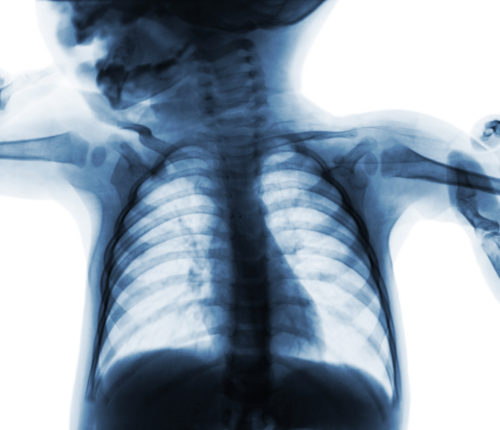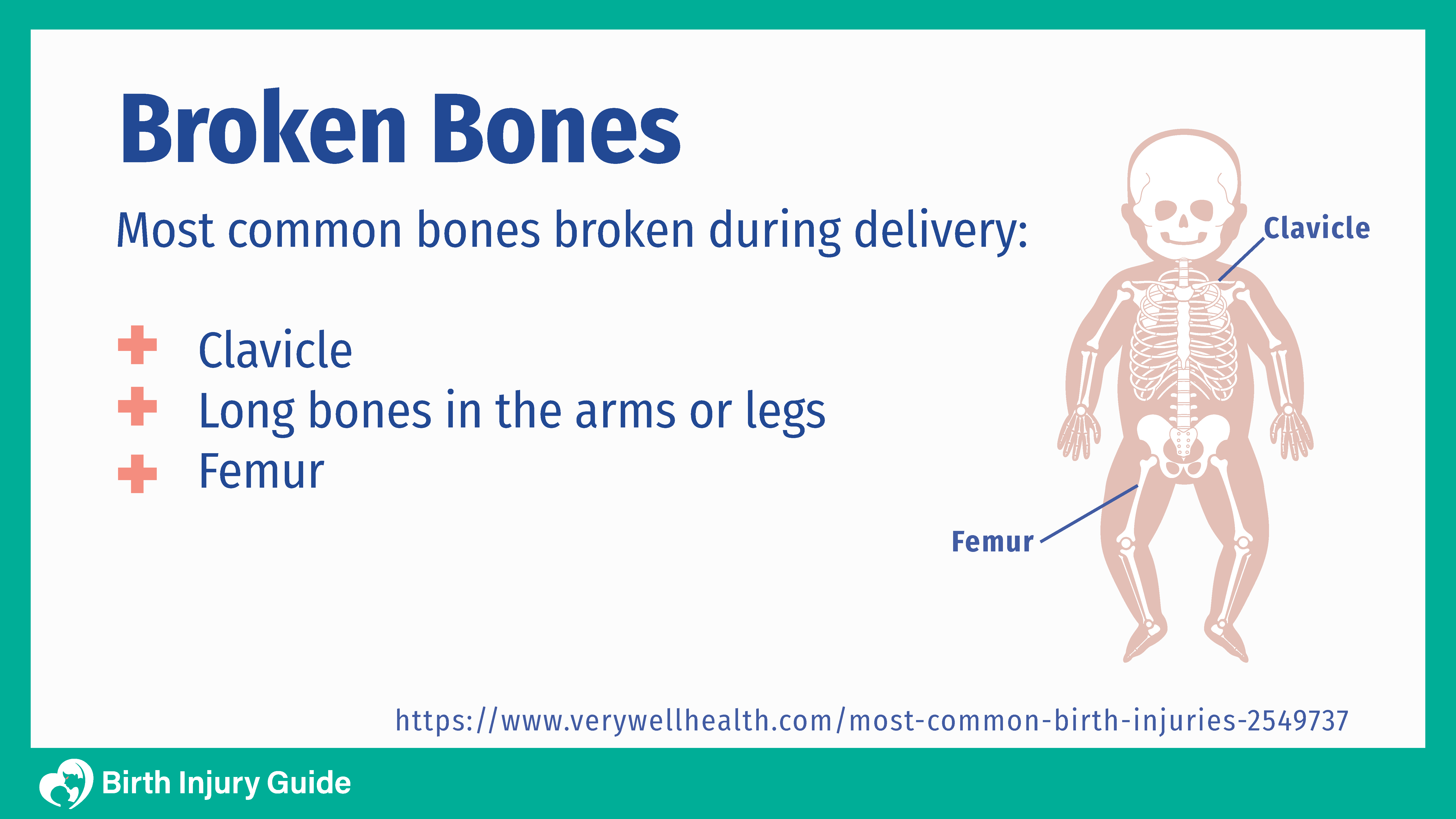
Infant Broken Bones
Many families find that bruising is a normal part of the process of bringing a new human into the world. Labor and delivery are difficult, and can result in minor injuries to the infant. Infant broken bones, however, may indicate that something happened during the delivery process that was outside the norm.
Physicians must be careful to ensure that the infant doesn’t suffer from needless harm caused by human error and medical mistakes.
Types of Infant Broken Bones
There are congenital factors that can cause orthopedic injuries during labor and delivery. However, infant broken bones are more commonly due to birth injuries caused by the infant’s size or position during delivery.

Infant broken bones may include:
- The clavicle is the most common bone broken during delivery.
- Growth plate fractures, as the ends of bones are softer and more vulnerable.
- Femur fractures if the leg is twisted awkwardly during delivery.
What Causes Infant Broken Bones?
Infant’s bones are not as hard as adults, meaning that a difficult delivery can cause bones to fracture or break. While clavicle breaks are most common, infants can experience a break to any bone if pressure or force is applied to the area.
Some of the more common reasons why infant broken bones occur include:
- Prolonged labor
- Abnormal fetal presentation
- A doctor’s failure to recognize and properly respond to breech positioning
- Improper use of Pitocin
- Shoulder dystocia
- Aggressive or forceful use of forceps or vacuum extraction
Severe bruising or even broken bones can happen during a normal delivery with no fetal or maternal distress. Sometimes inexperienced medical staff unnaturally pull or yank on the baby even though there is no cause for concern that the infant is in danger. Inexperienced medical staff members may also attempt to pick up the baby from their arms instead of securely from the back and neck.
Can Infant Broken Bones be Prevented?
Fractures and broken bones that occur during childbirth can usually be prevented with diligent, careful medical care during the labor and delivery period. For example, sometimes a baby may be proportionately too small to pass through the mother’s cervix successfully – a condition called cephalopelvic disorder (CPD). Birth injuries can be prevented by addressing CPD immediately.
Also, during a normal delivery, a physician may pull improperly on the baby or use birth-assisting tools with too much force. If the infant becomes stuck in the birth canal, failing to order a C-section increases the risk of infant broken bones. In some instances, although extremely rare, an infant is dropped shortly after delivery.
Start Your FREE Case Review Today
If you or your child is injured as a result of medical negligence, call us to learn more.
Symptoms of Infant Broken Bones
Broken bones are not easily detectable, as the baby is unable to tell you where the pain is coming from. However, a few telltale signs that may indicate a broken bone include:
- Swelling around the broken bone
- Obvious signs of pain, such as constant crying
- Inability to move the broken limb
- Feeling of ‘crepitus’, or a crunchy/bubbly feeling under the skin. Doctors often discover broken clavicles on exams due to crepitus.
Symptoms of Infant Fractures
According to the Nationwide Children’s Hospital, clavicle fractures (collarbone fractures) are the most common birth injury. It almost always occurs after a rough or stressful childbirth. The most common symptoms associated with a clavicle fracture include:
- Crying when the affected area is touched or moved.
- Little or no movement in the affected area, generally the arm on the side of the fracture.
- The affected side of the shoulder may appear to droop and be lower than the unaffected side.
- A lump may appear in the affected area, usually a few weeks after the injury, which indicates a healed fracture.
Symptoms of bones fractures in the legs, arms, or other limbs may include:
- Pain and swelling in the affected area
- Redness and bruising around the affected area
- Inability to move the limb in the fractured area
- Deformity in the affected area, which is typically easily recognizable
Boston Children’s Hospital states that it’s important for parents and/or loved ones to be proactive about infant fractures. Young bones heal faster than adult bones, but without the proper treatment, a fracture can lead to permanent issues.
Treatment for Infant Broken Bones
Medical intervention is not always necessary if an infant experiences a broken bone or fracture. Of course, you should consult your doctor about the best methods of promoting healing, but many fractures heal on their own.
If a fracture occurs at the end of a bone, or the growth plate, it may affect the growth of the bone. This type of fracture does require medical attention because it can lead to abnormal growth of the bone.
In most cases, fractures and broken bones are treated with:
- Splints
- Casts
- Medication
- Traction
- Closed reduction
- Surgery for severe cases
Fortunately, in most situations, bones and fractures will heal well with treatment and the baby will be fine. Be certain to follow your physician’s medical advice after medical treatment, which may include ice compression and/or elevating the injured limb.
Prognosis for Infant Broken Bones
The prognosis for infant broken bones is generally favorable. Most fractures or broken bones heal on their own. When treatment is necessary, it is important to helping promote healing, strength, and overall bone health.
Infants whose bones heal well may have few, if any, additional symptoms related to the fracture or break. Infants with more severe breaks may experience longer-term pain and suffering, physical difficulties and frustration.



